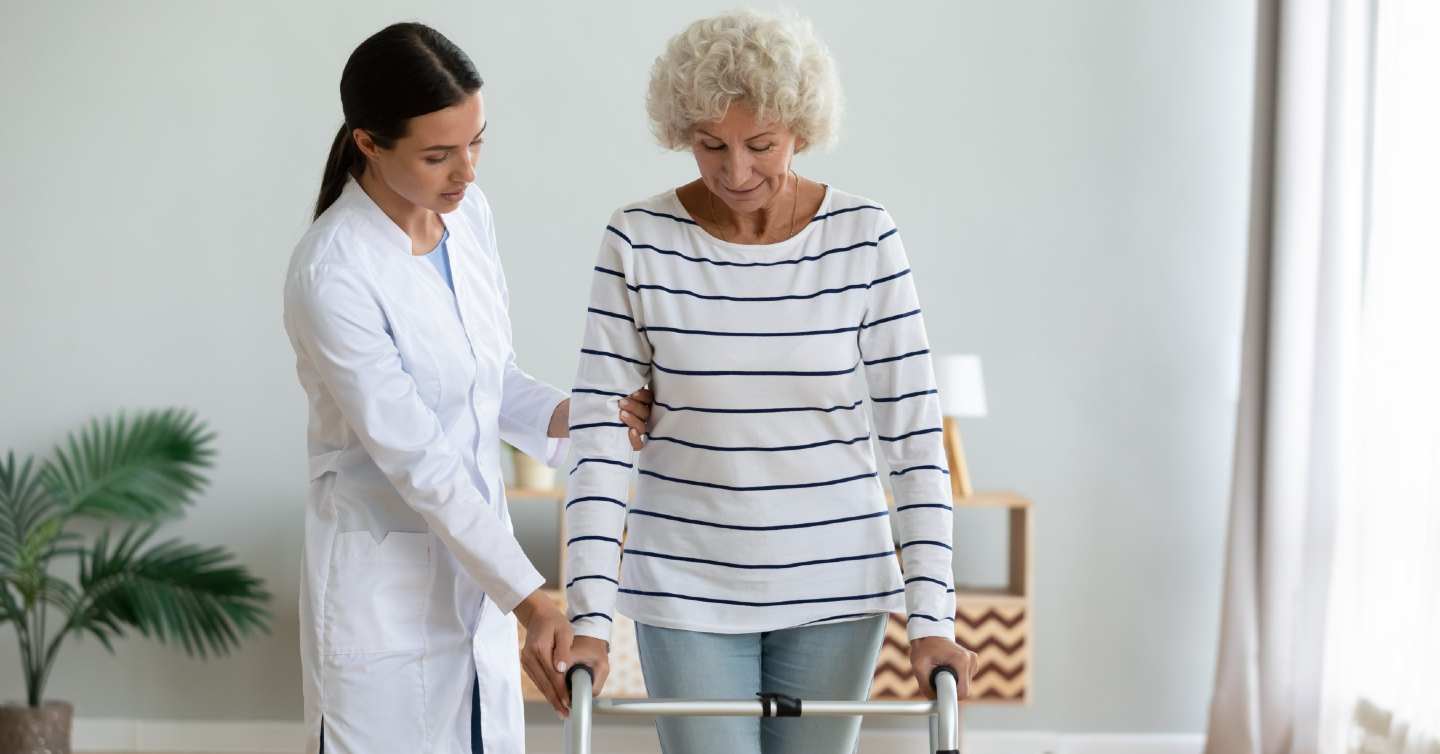Osteoporosis Means Taking Extra Care

How to Recover from An Osteoporosis Fracture
By Jennifer Footit-Tank RN BSN, quality care coordinator at Network Health
Originally published on 5/14/2021 at 12:30 p.m.
Updated on 5/3/2022 by Jennifer Footit-Tank RN, BSN
You have experienced a fall resulting in a broken bone. Maybe you knew you had osteoporosis prior to the fall or have now just been diagnosed with it. Many people don’t realize they have osteoporosis until their bones become so weak that a sudden strain, twist or fall results in a fracture. That is why it is often called the silent disease.
Treatment for osteoporosis fractures may be different than a typical fracture. This is because the bones are already in a weakened state, limiting some treatment options. This type of bone fracture usually takes six to twelve weeks to heal and may involve braces, surgery and a lot of rest.
Treatment for fracture recovery from osteoporosis
So, what does treatment for a fracture from osteoporosis look like? The following items are almost always part of a treatment regimen prescribed by your personal doctor after a fracture.
Resting the affected area
Rest will allow the bone and surrounding tissues to heal any bruising or strains that may have resulted from the fracture.
Management of pain
Your doctor may recommend medication, massage, acupuncture, relaxation techniques, ultrasound or therapy to help manage the pain. Pain management needs will change as the bones heal.
Physical therapy
Physical therapy will be essential to prevent stiffness and breakdown scar tissue, reducing inflammation. This will also help with the pain. It also important to keep moving to prevent loss of muscle mass and strength, which could lead to slower recovery or even another fracture later on. A cane or walker may be recommended to assist with balance.
Recovering from fear of movement
Fear of movement is common for the fractured bone or joint even after it heals. It is important to start gently moving the affected area to reduce any anxiety that may have developed due to pain or fear of breaking another bone.
Positive thinking and affirmations
Positive thinking or affirmations can help motivate your healing. Tell yourself or write down reminders that you can beat and treat osteoporosis. “I feel good about my health and my bones,” or “I feel good about life,” are both great messages.
Prevent a future fracture
Review what caused the fracture. Complete an assessment of your surroundings to see if modifications need to put in place, such as improving lighting or installing handrails in your home.
Increasing bone strength
Talk with your personal doctor about developing a plan to preserve current bone strength or start certain medications to slow the progression of your osteoporosis.
Additionally, you may decide to make lifestyle changes. Review your diet to ensure you are receiving enough calcium and vitamin D. Do you need to stop smoking or reduce the amount of salt, alcohol or caffeine you consume daily?
Preventing the type of trauma or stress that resulted in your fracture is also important. With your doctor, review ways to prevent future fractures such as medication changes, blood pressure management, vision and hearing exam and even the type of shoes you wear.
You can also enroll in a class that improves balance and muscle strength. Classes such as Tai Chi, Silver neakers® or classes at your local senior center are all geared to improve balance and strength in a way to help prevent falls and fractures as you age.
Finally, look into community-based programs that specialize in fall prevention programs such as wihealthyaging.org or Wisconsin Institute for Healthy Aging, who you can reach by calling 608-243-5690.
After the acute phase of your recovery is completed, it is important to continue to evaluate your osteoporosis. Within six months of your fracture, guidelines recommend either having a bone mineral density test or starting medication for osteoporosis.
This can be completed at your personal doctor’s office or many Network Health members can contact us for a free screening within the comfort of your home by a registered nurse.
Recovery from an osteoporosis-related fracture can heal as well as a typical bone fracture by following your provider's recommendations. Once healed, healthy lifestyle changes can help prevent a future fracture so you can get back to being active and participating in activities that are essential to your quality of life.
Osteoporosis fractures aren’t permanent but can be preventable
As you can see, recovering from an osteoporosis fracture can take more time than a standard fracture but is absolutely possible. Taking steps and making a plan with your personal doctor gives you the best shot at coming out of your fracture feeling healthier and stronger than you did before.
For questions about a bone density screening or other preventive care screenings and options, contact us today.



